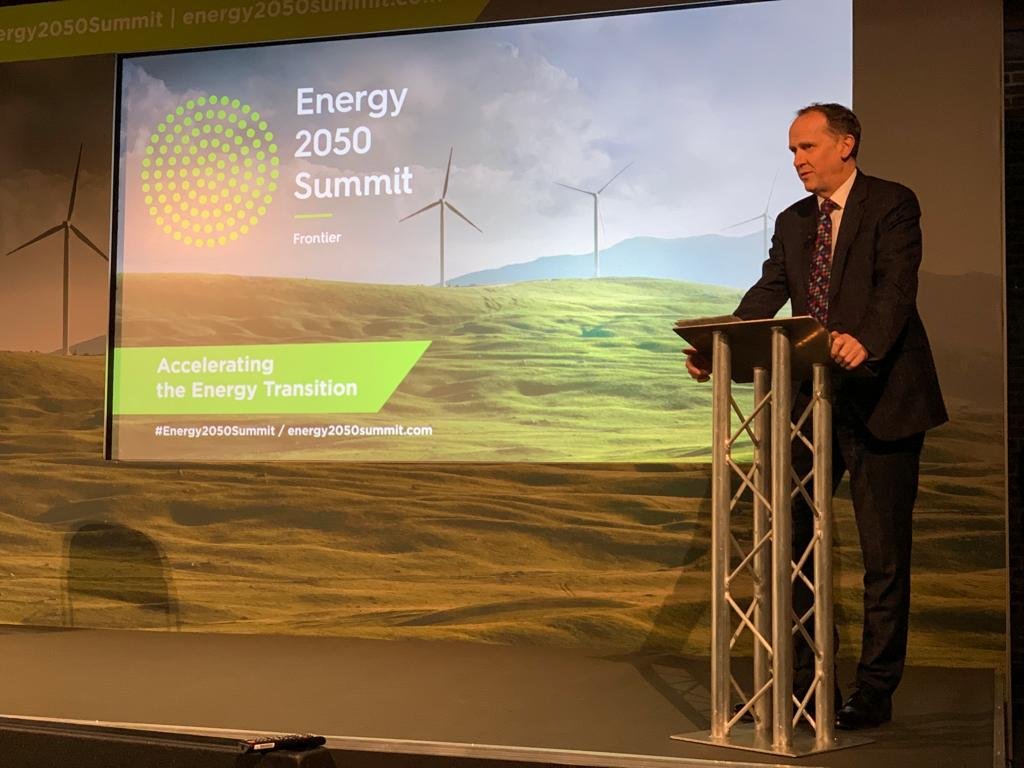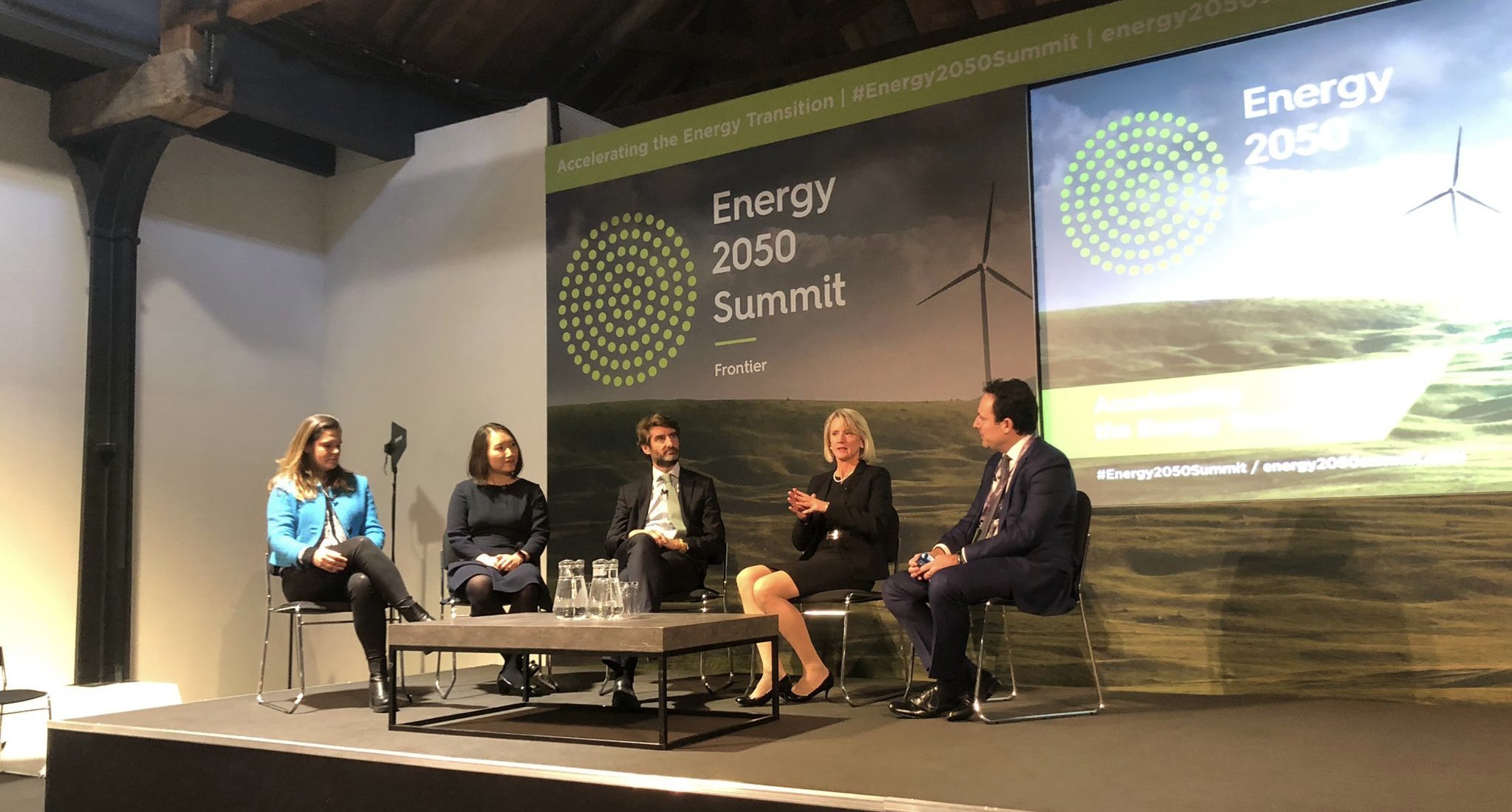Day 1 Of The Energy 2050 Summit – Find Out What Went On
The energy transition – a topic with infinite possibilities for discussion, and seemingly infinite perspectives. But when it comes to those who are producing, those who are delivering, those who are investing in and those who are innovating for cleaner energy, are there any synergies of opinion and strategy?
The resounding answer that’s come out of day one of the Energy 2050 Summit is “yes”. We’ve brought a wide range of international experts together and discovered that for each, their work is underpinned by the need for collaboration, innovation, transparency and an attitude of “just doing it”.
Scottish Power Sets the Scene
The scene was set with a reality check from Scottish Power CEO, Keith Anderson, who gave an honest appraisal of the energy sector during the past 12 months, noting that the collective enthusiasm of COP26 has since come up against significant challenges, both from an international geopolitical perspective and also closer to home, not least the hurdles created for the development of renewable energy via the recently announced windfall taxes for low carbon generation assets.
Telling us that “this change is coming and it’s coming faster than you think”, Keith urged for the need to encourage, invest and make most of the opportunity presented by the energy transition. Whilst the UK needs to become a more attractive investment option, there is real positivity in that we know how to do transition, the solutions are already there – we just need to “get on with it”.
A Not So Gradual Process
Scottish Power’s call to action was echoed throughout each session. As keynote speaker, Marcos Matijasevich of Essar neatly summed up, “This is not about small, gradual changes – a step change is required.” Highlighting a £45m investment in a first of its kind (in the UK) furnace which will dramatically reduce carbon emissions and the work Essar is undertaking to facilitate a transition to low carbon fuels, the need for speed was also underlined by E.ON’s Gordon Thompson. Focusing on the key challenge of rising energy consumption, E.ON believes that collaboration with companies of all sizes is key to accessing the technologies that will change the energy system at the required pace.
A People Thing
The critical requirement for partnerships and collaboration in driving innovation forward was constant call throughout the day, but the audience was cautioned that collaboration isn’t always straightforward; it needs dedication and a common objective – and fundamentally rests on people. As “Building World-Class Leadership” session leader, Andrea Petrone commented, “digitalisation is important but is that the only thing we need at this time?”
His opinion that “people are the real limit to the energy transition” was repeated in a number of different forms throughout the day. Andrea expanded on this, suggesting that whilst technology is of course key, it’s not necessarily the savour of this huge industrial shift and that a change in mindset to a more “Silicon Valley” approach of “we can do it and we can do it quickly”, is required.
Breaking Down the Barriers
When discussing the barriers to accelerating the energy transition, our investment expert panellists were clear about one thing; there is no shortage of potential investment in the energy transition. Rather, the barriers that can hinder projects getting off the ground include the scale of land (or sea) required, complicated planning processes, due diligence, biodiversity considerations and indeed social acceptance. The panel, which included representatives from Carbon Tracker and IFC, was equally clear that grid availability will be critical to the ongoing development of our energy transition. Once again, it the discussion focused on the critical role partnerships play in the energy transition – at every turn, government, business and community input is required, with the suggestion that a collaboration between mature and new technology can provide stability to a volatile market.
“Investment Opportunity of a Lifetime”
The role of innovation in the energy transition might seem pretty obvious - the UK Prime Minister certainly thinks it is central to a positive future for the country - but our panel made the point that innovation is not immediate, certainly not easy and definitely not linear. Once again, collaboration was cited as the foundation of all innovation. As Jurgen Hornman of Shell Ventures pointed out, Uber would not exist without smart phones, smart phones would not exist without touch screen technology… you get the idea.
Innovate UK echoed that sentiment at a more immediate level, highlighting projects it runs which connect and consolidate local initiatives, with the objective of facilitating an accelerated energy transition for the benefit of the area/region.
Our panellists agreed that testing innovation in real life will be critical before we can make any form of prediction on the course the energy transition will take and the session closed with a thought provoking suggestion from Shell Ventures that companies could perhaps incentivise their end users for doing the “right thing” from a climate perspective.
Industrial Decarb: Opportunity for UK to get stuck in
The Committee for Climate Change tells us the CCUS is absolutely essential to achieving our net zero target by locking away the carbon dioxide emitted by heavy industry and by providing locally-produced low carbon hydrogen to power for industry, transport and to heat for our homes and businesses. Members of two key UK decarbonisation clusters joined us to discuss the rationale behind the development of clusters and the benefits they can bring to the UK environment and economy.
Our panellists were all of the opinion that there is no option but to decarbonise industry – it simply won’t exist without it. The decarbonisation of UK industry is not a new idea and having drawn upon the lessons learned, the panel was clear that CCUS is the optimum, most cost-effective solution. However, they describe a long-term process, a complex business model framework and an equally complex integrated investment process.
So why the cluster approach and does it mitigate any of the challenges mentioned above? Again, the theme of collaboration dominated discussion – geographic proximity allowing for shared infrastructure and skillset, and facilities eventually being used to capacity, ultimately resulting in far more time- and cost-efficient decarbonisation.
The UK government’s high level ambition in this regard, aiming for a net zero cluster by 2040 and up to four very low carbon clusters by 2030, was discussed. Our panellists tell us that whilst the CCUS principle is not technically difficult, industry is currently dealing with substantial market failure in that CO2 is zero-value waste product: there needs to be a shift which not only creates value but also sees wider society begin to recognise the value of decarbonisation.
Our panel described the UK industrial decarb business model framework as possibly the most advanced. However, they conceded that the US framework does attract capital incredibly quickly in comparison. Whilst the panel was clear that the UK government is working very hard to activate these projects, it’s clear that the country could quickly lose the lead it has gained if construction does not start shortly. The opportunity for the UK to “get stuck in”, have an international advantage and create a sustainable supply chain is clearly too valuable for us to miss.
As Day One of the Energy 2050 Summit draws to a close, we thank our presenters, our highly interactive audience and our sponsors – National Grid, Seplat Energy, Essar, Alchemist, Vertex Hydrogen, Stanlow Terminals and Faculty.



